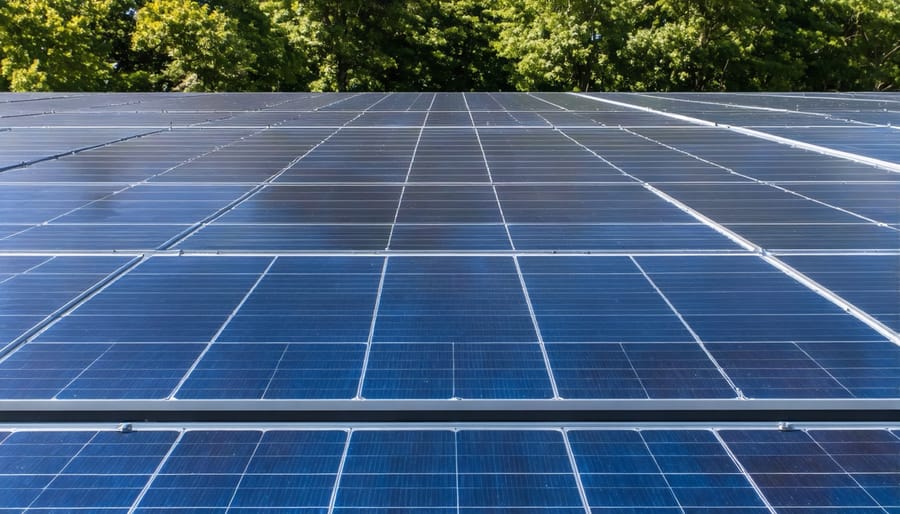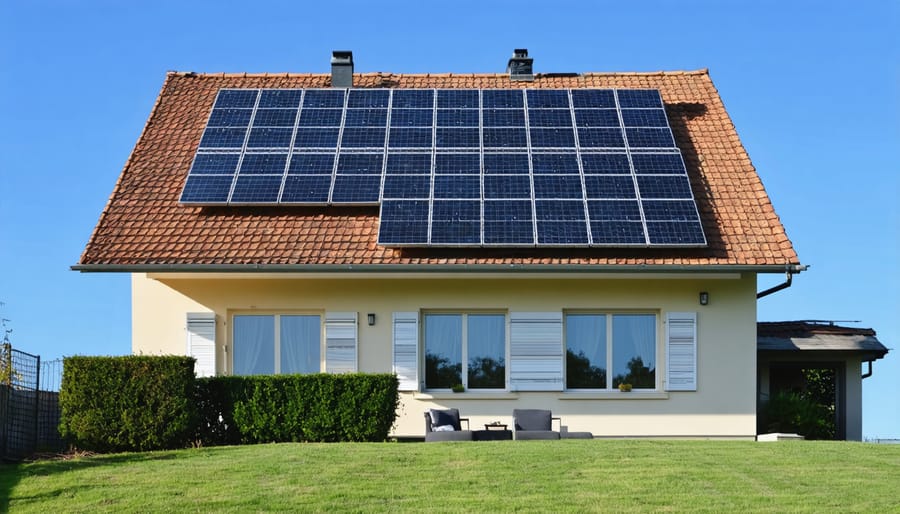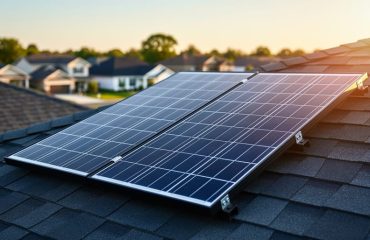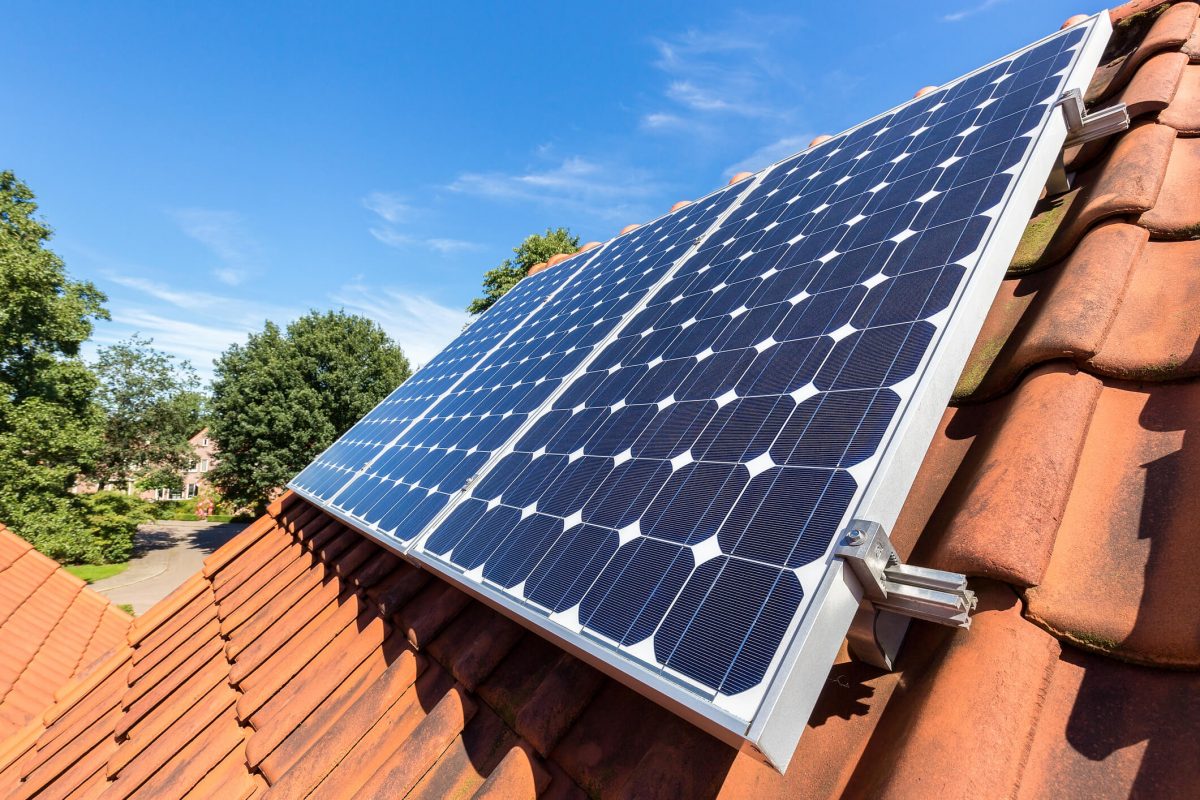**Harness the power of your solar data to predict—and maximize—your energy savings.** Power BI’s predictive analytics transforms your solar system from a static installation into an intelligent energy partner that anticipates your needs, forecasts your production, and identifies money-saving opportunities before they slip away.
Think of predictive analytics as your solar system’s crystal ball. By analyzing patterns in your energy production, weather data, and household consumption habits, Power BI reveals what’s coming next—whether that’s a surge in production during upcoming sunny weeks or a potential dip that means you should shift energy-intensive tasks. This isn’t about complex algorithms or technical wizardry; it’s about getting clear, actionable insights that put more money back in your pocket.
The financial impact is immediate and measurable. Homeowners using predictive analytics typically identify 15-30% more savings opportunities than those relying on basic monitoring alone. You’ll see exactly when to draw from your stored solar energy versus the grid, which appliances are secretly draining your efficiency, and how seasonal changes will affect your monthly bills—all presented in visual dashboards that make sense at a glance.
Whether you’re considering solar or already generating clean energy, understanding predictive analytics means taking control of your energy future. The technology works behind the scenes while you enjoy the benefits: lower bills, optimized performance, and the confidence that your sustainable investment is working as hard as possible.
What Predictive Analytics Actually Means for Your Solar Panels

The Brain Behind Your Solar System
Think of AI-powered solar predictions as having a super-smart assistant who never sleeps, constantly watching three key factors that affect your solar system’s performance.
First, it monitors weather patterns in real-time and compares them to historical data. Your system learns that cloudy Novembers typically produce 30% less energy than sunny ones, so it can warn you in advance and help you adjust your energy usage accordingly.
Second, the AI studies your household’s energy habits over time. It notices you use more electricity on weekday mornings and weekend afternoons, helping predict exactly when your solar panels will cover your needs versus when you might draw from the grid.
Third, it tracks seasonal changes with remarkable precision. The system recognizes that your energy production peaks in June but your air conditioning use also skyrockets, while December’s shorter days mean less solar generation but potentially lower overall consumption.
By combining these three data streams, Power BI creates accurate forecasts about your energy future—sometimes weeks or months ahead. This means no more surprise electric bills or wondering whether you’re maximizing your investment. Instead, you get actionable insights like “expect 15% higher production next week” or “your current usage pattern will save you an extra $47 this month.” It’s personalized financial planning for your energy needs.
From Numbers to Insights You Can Actually Use
Raw data streaming from your solar panels—voltage readings, weather patterns, consumption metrics—means little until it’s translated into actionable information. That’s where Power BI’s visualization capabilities shine. Instead of spreadsheets filled with numbers, you’ll see intuitive graphs and dashboards that tell the story of your energy production at a glance.
Picture opening your morning dashboard to see colorful charts predicting today’s energy generation based on the weather forecast. A simple gauge shows whether you’ll produce surplus energy to sell back to the grid or if you should conserve battery storage for evening use. These user-friendly solar interfaces display exactly when your panels will hit peak production and when your household typically uses the most power.
The financial insights are equally straightforward. One visualization might show your monthly savings trending upward as the system learns your patterns. Another could compare your current electric bill against what you’d be paying without solar—a satisfying reminder of your investment’s value. You’ll also see predictions for optimal times to run energy-intensive appliances like dishwashers or charge electric vehicles, maximizing the use of your self-generated power.
These aren’t complex technical readouts requiring an engineering degree to interpret. They’re simple, visual answers to the questions that matter most: Am I saving money? When should I use more power? Is my system performing well?
Real Ways Predictive Analytics Saves You Money
Never Waste Excess Energy Again
Picture this: your solar panels are generating more electricity than your home is using at 1 PM on a sunny afternoon. Instead of sending that valuable energy back to the grid for minimal credit, Power BI’s predictive analytics sends you a smart notification. “Perfect time to run the dishwasher and start a load of laundry!”
These intelligent systems learn your household’s energy patterns and weather forecasts to identify exactly when your solar production will peak. They compare this against your typical usage and alert you when there’s a surplus. The result? You use the free energy you’re already generating instead of buying expensive electricity from the grid later in the evening.
Think of it as having a personal energy assistant that maximizes every ray of sunshine. By timing energy-intensive tasks—like charging your electric vehicle, running the pool pump, or doing laundry—to coincide with peak solar production, you dramatically increase your self-consumption rate. Many homeowners see their grid purchases drop by 20-30% simply by being smarter about when they use power, turning would-be waste into real savings.
Smarter Battery Storage Decisions
Battery storage becomes truly valuable when it knows exactly when to save energy and when to use it. Power BI’s predictive analytics acts like a smart assistant for your battery, learning your household’s unique patterns and the weather forecast to make money-saving decisions automatically.
Here’s how it works in simple terms: the system analyzes upcoming weather predictions to determine when your solar panels will produce the most energy. It also tracks when your home uses the most electricity—like weekday mornings or weeknights. Using this information, your battery charges when solar production is highest and discharges during peak-rate hours when grid electricity costs more.
For example, if the forecast shows cloudy weather tomorrow, your system might keep more energy stored today instead of sending it back to the grid. During summer months when air conditioning runs frequently, it learns to reserve battery power for those expensive afternoon hours when electricity rates spike.
The financial impact adds up quickly. Most homeowners see their battery efficiency improve by 20-30% once the AI learns their patterns, translating directly to lower monthly bills without any extra effort on your part.
Catch Problems Before They Cost You
Think of predictive analytics as having a health monitor for your solar system. Just like your car’s dashboard warns you about maintenance needs before you break down on the highway, smart solar monitoring systems use Power BI to spot problems while they’re still small and inexpensive to fix.
Here’s how it protects your investment: The system constantly tracks your panels’ performance, comparing actual output against expected production. When a panel starts underperforming—even by just a few percentage points—you’ll receive an alert. Maybe there’s dust buildup, a loose connection, or early signs of equipment wear. Catching these issues early means scheduling a quick, affordable maintenance visit instead of discovering a complete system failure during peak summer months when you’re counting on maximum savings.
The financial benefit is significant. A single failed inverter can cost $1,000-$2,000 to replace, plus lost energy production during downtime. Early detection typically reduces repair costs by 30-50% and prevents those frustrating periods when your electric bill creeps back up because your system isn’t performing optimally.
Your Solar Dashboard: What You’ll Actually See

Tomorrow’s Weather, Today’s Action Plan
Imagine waking up to a friendly notification on your phone: “Heavy cloud cover predicted tomorrow—your system will produce 30% less energy. Consider running your dishwasher tonight instead.” This is predictive analytics in action, transforming complex weather data into simple, actionable advice you can use right now.
Modern solar energy management apps powered by Power BI don’t just report what happened yesterday—they help you plan for tomorrow. When your system forecasts lower production due to incoming storms or seasonal changes, you’ll receive clear recommendations: shift energy-intensive tasks to sunnier periods, or adjust your thermostat settings to maximize your stored energy.
These aren’t vague warnings requiring a science degree to understand. Instead, you get specific guidance like “Run your washing machine before 2 PM to use solar power” or “Tomorrow looks sunny—perfect day to charge your electric vehicle.” Your system becomes a proactive partner in managing your home efficiently, helping you save money without constantly monitoring weather forecasts or production charts yourself.
Your Personal Energy Forecast
Power BI transforms complex energy data into your personal forecast that’s as easy to read as a weather report. Each week, you’ll see a clear prediction of how much electricity your panels will generate, how much your household will consume, and exactly how much money you’ll save. These aren’t just abstract numbers—they’re presented in colorful, intuitive charts that anyone can understand at a glance.
Your monthly forecast takes this further by showing seasonal trends and helping you plan ahead. For example, you might see that next month’s production will generate an estimated $180 in savings, or that your summer air conditioning will consume about 60% of your solar production. This visibility helps you make smarter decisions about when to run major appliances or when you might have surplus energy to spare.
The real magic happens when Power BI combines real-time solar data with historical patterns to refine its predictions continuously. If an upcoming week looks particularly sunny, you’ll know in advance to schedule energy-intensive tasks. If production might dip, you’ll have time to adjust your usage habits. Every forecast includes dollar amounts alongside kilowatt-hours, so you always understand the financial impact—not just the technical metrics. It’s like having a financial advisor specifically for your home energy, working 24/7 to keep you informed and in control.
Debunking the Myths About AI and Solar Analytics
“It’s Too Complicated for Me to Use”
Here’s the reality: you don’t need to understand how predictive analytics works any more than you need to understand meteorology to check tomorrow’s weather. Power BI does the heavy lifting in the background, crunching numbers and spotting patterns while you simply view easy-to-read dashboards on your phone or computer. Think colorful charts, simple graphs, and straightforward recommendations—no spreadsheets or complex formulas required. The system automatically analyzes your solar production and energy usage, then presents insights like “You’ll generate 15% more energy this week” or “Consider running your dishwasher Tuesday afternoon for maximum savings.” It’s designed for homeowners, not data scientists, making sophisticated technology feel as natural as glancing at your thermostat.
“This Must Cost a Fortune”
Here’s a pleasant surprise: predictive analytics through Power BI doesn’t break the bank. Most modern solar systems now include this technology as a standard feature, not a luxury add-on. The setup typically requires minimal investment beyond your existing solar installation, since Power BI connects to data your system already collects. Even better, the cost pays for itself remarkably quickly—often within the first year. How? By identifying energy waste you didn’t know existed, optimizing when you use power versus when you store or sell it back to the grid, and preventing expensive equipment issues before they happen. Think of it as hiring a 24/7 energy consultant who works for pennies while saving you dollars daily on your electricity bills.
“My Privacy Will Be Compromised”
Your privacy stays firmly in your hands with Power BI analytics. The system works by analyzing patterns within your own household’s energy data—like when you use the most electricity or how weather affects your solar production—without transmitting your personal information to third parties. Think of it as having a smart assistant that learns your home’s unique energy habits and makes helpful suggestions, but everything stays local to your system. The analytics dashboard processes your data securely, focusing solely on helping you maximize savings and efficiency. You maintain complete control over your energy information while enjoying the benefits of intelligent forecasting. It’s personalized insights without the privacy trade-off, giving you the confidence to make smarter energy decisions based on your home’s specific patterns.
How Predictive Analytics Fits Your Lifestyle

For Busy Families
Life doesn’t slow down just because you installed solar panels. Between work, kids, and everything in between, who has time to monitor energy dashboards? That’s where predictive analytics shines. Power BI works behind the scenes, automatically alerting you when something needs attention—like upcoming peak usage periods or equipment issues before they become expensive problems. You’ll receive simple notifications about optimal times to run your dishwasher or when to expect higher energy production days. The system learns your household patterns and suggests personalized adjustments that fit your actual lifestyle, not some textbook scenario. Instead of becoming an amateur energy analyst, you get straightforward recommendations that maximize your savings while you focus on what matters. Set it once, and let the technology handle the optimization—your bank account benefits without the mental load.
For Remote Workers
Working from home means your energy use peaks during traditional business hours—exactly when electricity rates are often highest. Power BI’s predictive analytics becomes your silent productivity partner, analyzing when your home office draws the most power. By understanding these patterns, you can shift energy-intensive tasks like laundry or charging devices to times when your solar panels are producing surplus energy. The dashboard shows you real-time predictions of your afternoon energy production, helping you decide whether to run that dishwasher now or wait an hour. This smart scheduling means you’re using more of your own clean solar energy instead of pulling from the grid, directly cutting your monthly bills while maintaining your work-from-home comfort and productivity.
For Retirees and Fixed-Income Households
For those living on fixed incomes, unexpected expenses can disrupt carefully planned budgets. Power BI’s predictive analytics eliminates energy bill surprises by forecasting your monthly solar production and consumption patterns with remarkable accuracy. You’ll know in advance how much energy your system will generate and what, if any, grid electricity you’ll need to purchase. This foresight allows you to plan your monthly expenses confidently, knowing your energy costs won’t fluctuate unexpectedly. The technology also identifies the optimal times to run major appliances, helping you maximize your solar savings without complicated calculations. Many retirees report reduced stress simply from having clear visibility into their energy future. Instead of worrying about rising utility rates, you can focus on enjoying your retirement while your solar system works predictably in the background, delivering consistent savings month after month.
Predictive analytics with Power BI fundamentally transforms your solar panel system from a passive installation into an intelligent partner working around the clock for your benefit. Instead of simply converting sunlight to electricity and hoping for the best, these smart systems actively analyze weather patterns, anticipate your energy needs, and optimize every watt to maximize your savings while minimizing your environmental footprint. This isn’t futuristic technology reserved for tech enthusiasts—it’s available today and designed for everyday homeowners who want their solar investment to work harder and smarter.
The beauty of this technology lies in its accessibility. You don’t need to understand complex algorithms or spend hours managing your system. Power BI handles the heavy lifting behind the scenes, presenting you with clear, actionable insights that help you make informed decisions about your energy use. Whether it’s identifying the perfect time to run your dishwasher or alerting you to potential maintenance needs before they become costly problems, predictive analytics puts control back in your hands.
As solar technology continues evolving, these intelligent systems will only become more sophisticated and affordable. The future of home energy isn’t just renewable—it’s smart, responsive, and designed to make sustainable living easier than ever. Your solar panels can be more than just panels on your roof; they can be your financial ally and environmental contribution combined into one powerful system.









